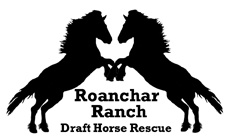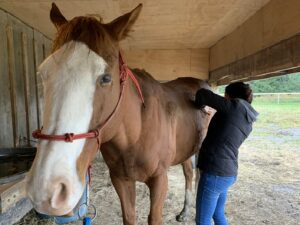Do Horses Need a Spa Day?
You bet they do! They say that equine massage has been around for approximately 200 years! However, beginning in the early 1990s, it has become much more widely understood, studied, and utilized.
Just like humans, horses have muscles, tendons, and nerves. From time to time, these may be out of alignment or in need of massage or adjustment. Sometimes, it is just relaxing and good for the mind and soul!
From the fine-tuned athlete, show horse, barrel racer, trail horse, jumper, dressage, workhorse, or your backyard pasture pet, massage can have positive results! Did you know that horses have approximately 700 muscles in their body? We, humans, have approximately 600! That’s a lot of muscle, or what I call, “horsepower”!
Not Just an Average Massage
Have you ever been on a massage table and the masseuse does their work and you melt into the table? Well, there are people that specialize in equine massage. There are also equine chiropractors and acupuncturists. These highly trained individuals work on the horses’ muscle groups to help relax, loosen, manipulate, and strengthen specific areas.
There are different types of massage techniques used by the equine massage therapist. These techniques are called effleurage, petrissage, compression, cross fiber massage, tapotement, trigger point therapy, and myofascial release. This therapy can encourage blood flow and bring in oxygen and other nutrients, at the same time removing lactic acid buildup. Just like us humans, we have different techniques depending on what we are needing.
Who Needs a Massage?
At Roanchar Ranch Draft Horse Rescue, we use OnPoint Equine Services to help Louie. Because of the lasting effects of having Equine Protozoal Myeloencephalitis, Louie’s muscles become tight and restrict his movement.
During a session, Louie displays tension release by licking his lips, yawning, and dropping his head. When the session is over, Louie usually is not as stiff when he walks and starts trotting a day or two later.
Don’t miss out on the latest news from the ranch! Sign up for our monthly newsletter today.


